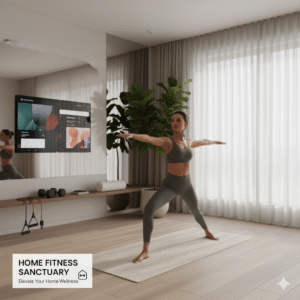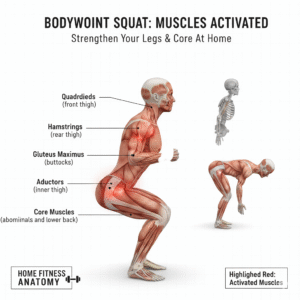
Staying active is essential for maintaining good health, boosting energy, and improving mood. But with busy schedules or gym closures, exercising at home has become more important than ever. The good news is, you don’t need fancy equipment or a gym membership to stay fit. Here are some effective home exercise tips to help you stay active, healthy, and motivated.
1. Create a Dedicated Exercise Space
Having a designated area for workouts helps you stay focused and consistent. It doesn’t need to be large—just enough space to move freely, stretch, and perform exercises safely. Add a yoga mat or a small rug for comfort, and keep your equipment like resistance bands or dumbbells nearby.
Tip: Make your space inviting with good lighting and ventilation—it can boost your motivation to exercise.
2. Set a Routine
Consistency is key to seeing results. Schedule your workouts at the same time each day, whether it’s morning, afternoon, or evening. Treat it like any other important appointment.
Tip: Start with 20–30 minutes a day and gradually increase the duration as you get comfortable.
3. Incorporate Bodyweight Exercises
You don’t need heavy weights to get strong. Bodyweight exercises are highly effective and can be done anywhere. Some examples:
Squats: Strengthen your legs and glutes
Push-ups: Work your chest, shoulders, and arms
Lunges: Improve balance and lower body strength
Planks: Strengthen your core
Tip: Perform 2–3 sets of 10–15 repetitions for each exercise to start.
4. Use Minimal Equipment for Variety
If you want to add resistance or variety, minimal equipment like resistance bands, dumbbells, or stability balls can enhance your workouts.
Tip: Resistance bands are lightweight, portable, and perfect for strength training at home.
5. Include Cardio
Cardio exercises help keep your heart healthy and burn calories. You don’t need a treadmill—these options work just as well at home:
Jumping jacks
High knees
Stair climbing
Dancing
Tip: Try short bursts of cardio (10–15 minutes) between strength exercises for an effective workout circuit.
6. Stretch and Warm-Up
Stretching and warming up reduce the risk of injury and improve flexibility. Spend 5–10 minutes before your workout warming up with light movements and stretching your major muscle groups.
Tip: Include dynamic stretches like arm circles or leg swings before exercising, and static stretches after your workout for cool-down.
7. Stay Motivated
Staying motivated at home can be challenging. Here’s how to keep yourself engaged:
Set fitness goals and track your progress
Follow online workout videos or apps
Exercise with a friend virtually
Reward yourself for achieving milestones
Tip: Music or a podcast during your workout can make exercise more enjoyable.
8. Listen to Your Body
It’s important to exercise safely. Pay attention to your body’s signals, and don’t push through pain. Modify exercises if needed and rest when necessary.
Tip: Consistency matters more than intensity—small, regular workouts are better than occasional intense sessions.
Conclusion
Home workouts are convenient, effective, and flexible. With a little planning, motivation, and the right exercises, you can achieve your fitness goals without ever stepping foot in a gym. Use these home exercise tips to stay active, strengthen your body, and boost your overall well-being—right from the comfort of your home.

